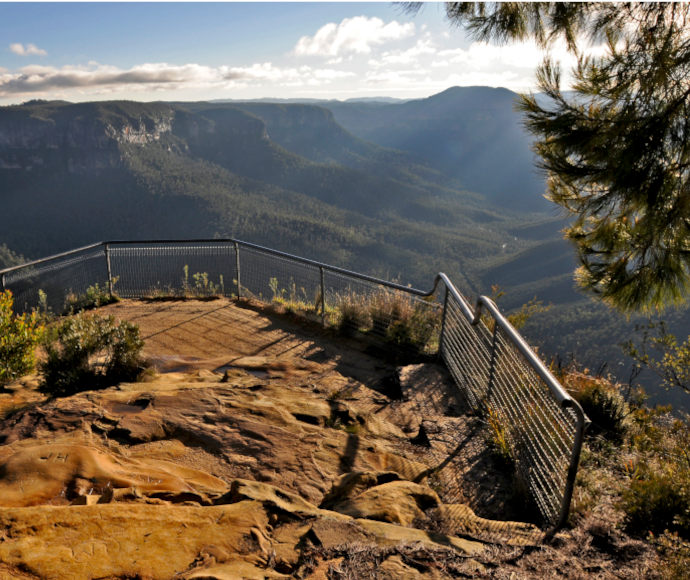Blue Mountains National Park has retained its top spot as the most visited national park in New South Wales. The NSW National Parks and Wildlife Service 2022 Park Visitor Survey shows 6.4 million domestic visits were made to the World Heritage-listed national park, which is home to 260,000 hectares of bushland, including the Three Sisters, Meehni, Wilmah and Gunnedoo.

The second most-visited national park in New South Wales is the world's second-oldest national park, Royal National Park on Sydney's southern coast. 5 million visits were reported.
Ku-ring-gai Chase National Park in Sydney's north sits third on the list, with 4.4 million visits to its winding creeks, rainforest, rocky cliffs, mangroves and Aboriginal sites.
Number 4 is Lane Cove National Park which has bushland reaching to East Ryde, Pennant Hills, Wahroonga and West Chatswood, and in fifth place is the alpine wonderland Kosciuszko National Park.
The top 10 most-visited national parks in 2022:
| 1) Blue Mountains National Park | 6.40 million visits |
| 2) Royal National Park | 5.05 million visits |
| 3) Ku-ring-gai Chase National Park | 4.40 million visits |
| 4) Lane Cove National Park | 2.61 million visits |
| 5) Kosciuszko National Park | 2.48 million visits |
| 6) Sydney Harbour National Park | 1.93 million visits |
| 7) Eurobodalla National Park | 1.41 million visits |
| 8) Garigal National Park | 1.18 million visits |
| 9) Cape Byron National Park | 1.03 million visits |
| 10) Brisbane Water National Park | 929,000 visits |
Across the state, there were more than 53 million domestic visits to national parks in 2022. That's an increase of 49% in the past 10 years. In addition to these domestic visitors, many international travellers also enjoyed our parks.
A record 12.5 million of the visits were made by children. Research has shown that building a meaningful connection with nature at an early age delivers far higher levels of connection and advocacy. NSW National Parks and Wildlife Service focuses on younger visitors through dedicated education programs and by fostering fun experiences.
The Greater Sydney region set a record with more than 20 million visits to its 49 national park reserves. Five of the top 10 parks are in Greater Sydney.
Around 1.8 million nights were spent in a campground, cottage, cabin or lighthouse within national parks.
The 895 reserves in the NSW National Parks and Wildlife Service system conserve around 10% of the state, protecting unique ecosystems across deserts, alpine regions, World Heritage Gondwanaland rainforest and Ramsar-listed wetlands.
The Park Visitor Survey started in 2008 and is undertaken every 2 years to better understand visitor use patterns and enable NSW National Parks and Wildlife Service to plan for the future.
The survey reports on the total number of visits, rather than the number of people who visited parks. It considers people who live in Australia.
"National parks are one of New South Wales' greatest public assets, which are loved by people from within our state, across Australia and internationally.
"In a post-Covid world it is clear that visits to national parks are growing.
"Across the state there are 895 national parks, nature reserves, state conservation areas and regional parks. These are places to be in nature, to swim, to seek adventure, to understand Aboriginal and other heritage and to appreciate the beauty of our natural environment.
"The NSW government is investing $74 million to upgrade visitor infrastructure in NSW national parks so people can enjoy unforgettable experiences, from camping trips in the bush to coastal getaways and alpine adventures."






